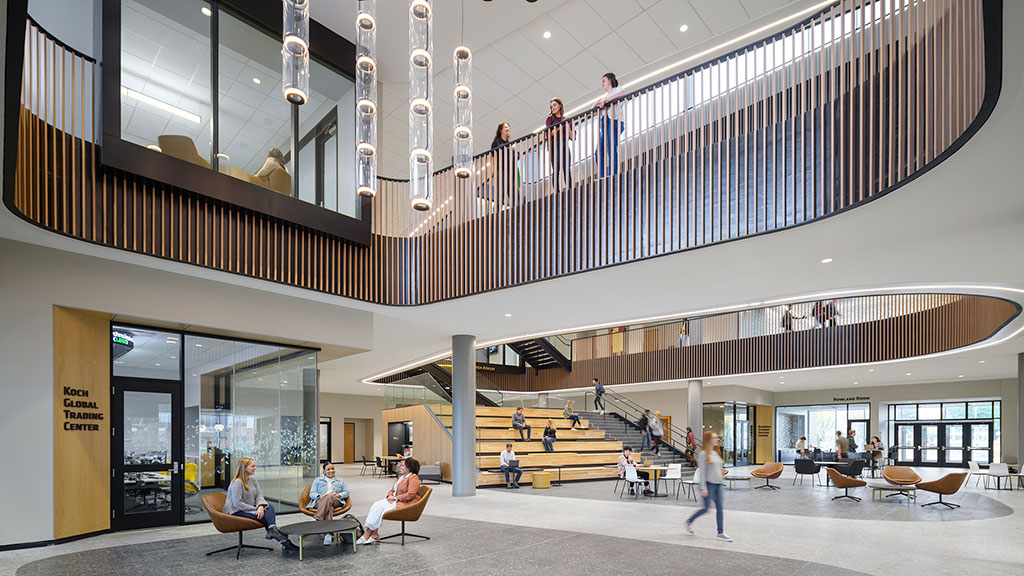How Tomorrow’s Workforce Will Shape Future Workplace Design
February 27, 2024 | By Janet Pogue McLaurin, Erin Cubbison, and Meghan Webster
In today’s rapidly evolving work landscape, the design of the workplace is a powerful tool for fostering collaboration, innovation, and productivity. How students learn is also rapidly changing, driving how higher education campuses are being designed for the future. Coupling our research surveying 4,000 U.S. remote and office-based workers and our study of 2,500 U.S.-based higher education students, educators, and staff, one thing is clear: how the future workforce learns will shape the future of workplace design.
In this blog post, we compare the latest research from both sources — Gensler’s Education Engagement Index and our Work, Life, and The Workplace research — both completed in late 2023. We found four key intersections between U.S.-based college students and office workers and how these findings will shape future workplace design:
1. Learning and Work Are Multimodal
How students learn, as well as how employees work, takes many forms. In higher education, the traditional lecture-style format has given way to more interactive and experiential learning approaches. Through our research, Gensler has identified six modes of learning, ranging from acquiring to reflecting to collaborating to socializing. This multimodal learning framework addresses diverse learning styles, preferences, and study subject matter. Similarly in the workplace, employees have different work modes to get work done ranging from working alone to working with others to socializing and connecting. Learning can be an independent work mode or occur simultaneously when working alone, alongside colleagues, or even when coaching or mentoring. Learning is not a single task or activity, but often an outcome of multimodal activities throughout a typical day or week. Many organizations and workers embrace lifelong learning for innovation as well as individual career autonomy and competitiveness.
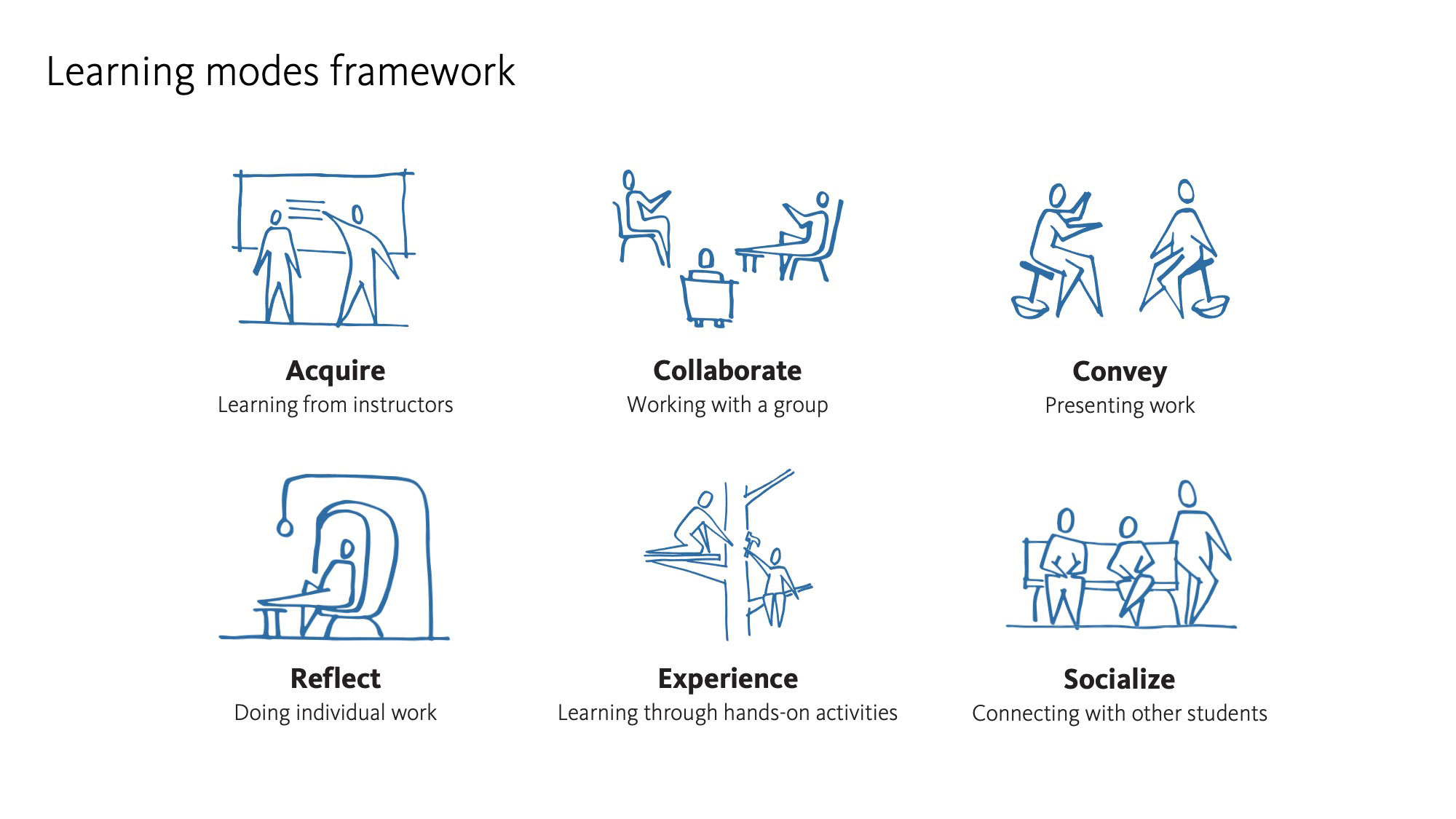
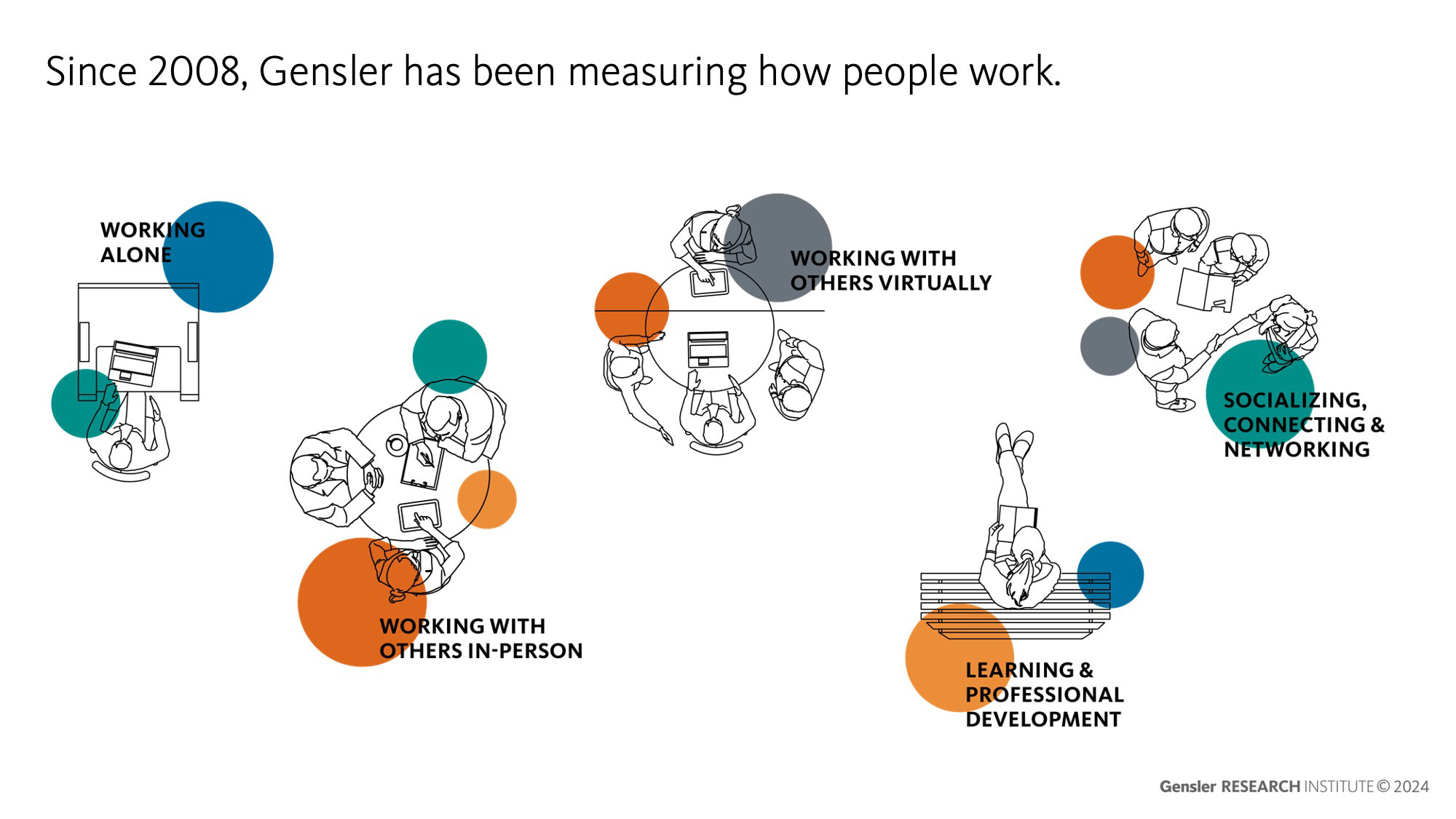
Higher education campuses have long designed a range of spaces and places beyond the classroom for all modes of learning to occur. The workplace was slower to respond but has now shifted from an individual desk and enclosed meeting rooms as the primary work settings to offer a wider array of spaces within the office today. From collaborative zones equipped with interactive screens to quiet booths or zones for focused work, the modern office is designed to support a wide range of activities and interactions that reflect how we work today.
2. On-Site Presence but Still Hybrid
The COVID-19 pandemic accelerated the adoption of remote work and hybrid models in both education and the workplace. Colleges and universities quickly adapted by offering virtual instruction, new tools for synchronous and asynchronous engagement, and online courses. As students, educators, and staff return to campus, they all show an increased preference for an on-campus learning experience, while also maintaining strong preferences for hybrid. Students have the strongest preference for a fully on-campus learning experience with Gen Z students being two times more likely to prefer on-campus instruction than other generations.
Hybrid work is here to stay, but so is the office. Not only in the U.S., but across 14,000 global workers in nine countries and 10 industries, we found a gap between what office workers say and what they do. We found that employees were coming into the office half their time, but say they ideally needed the office two-thirds of a typical workweek for their individual productivity and for their team’s productivity. Our survey respondents reported that working at the office positively impacts their work and productivity. The office of the future will need to accommodate a hybrid workforce, offering spaces that facilitate both in-person and virtual collaboration, ensuring that no matter where employees are, they can stay connected and productive.
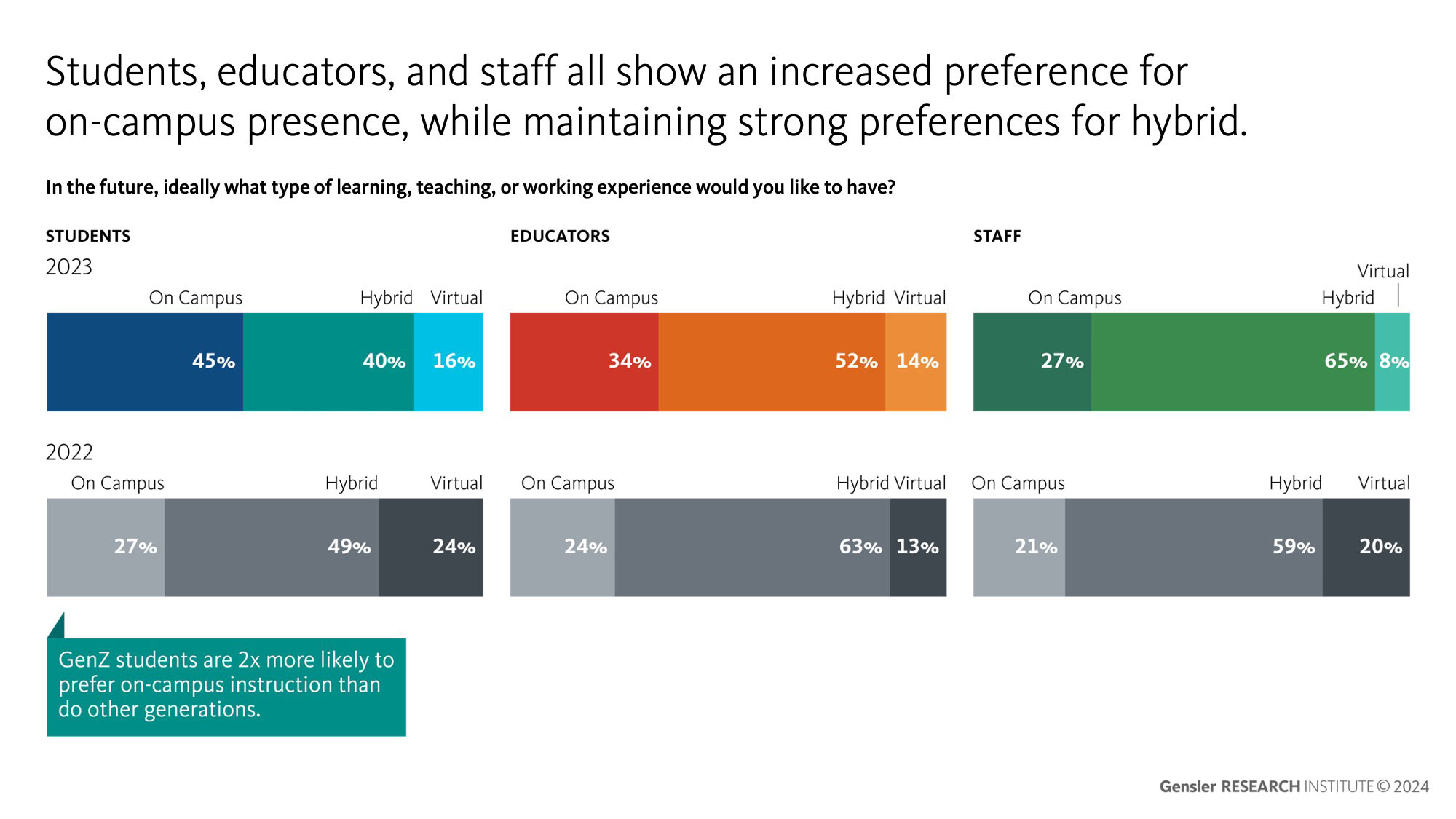
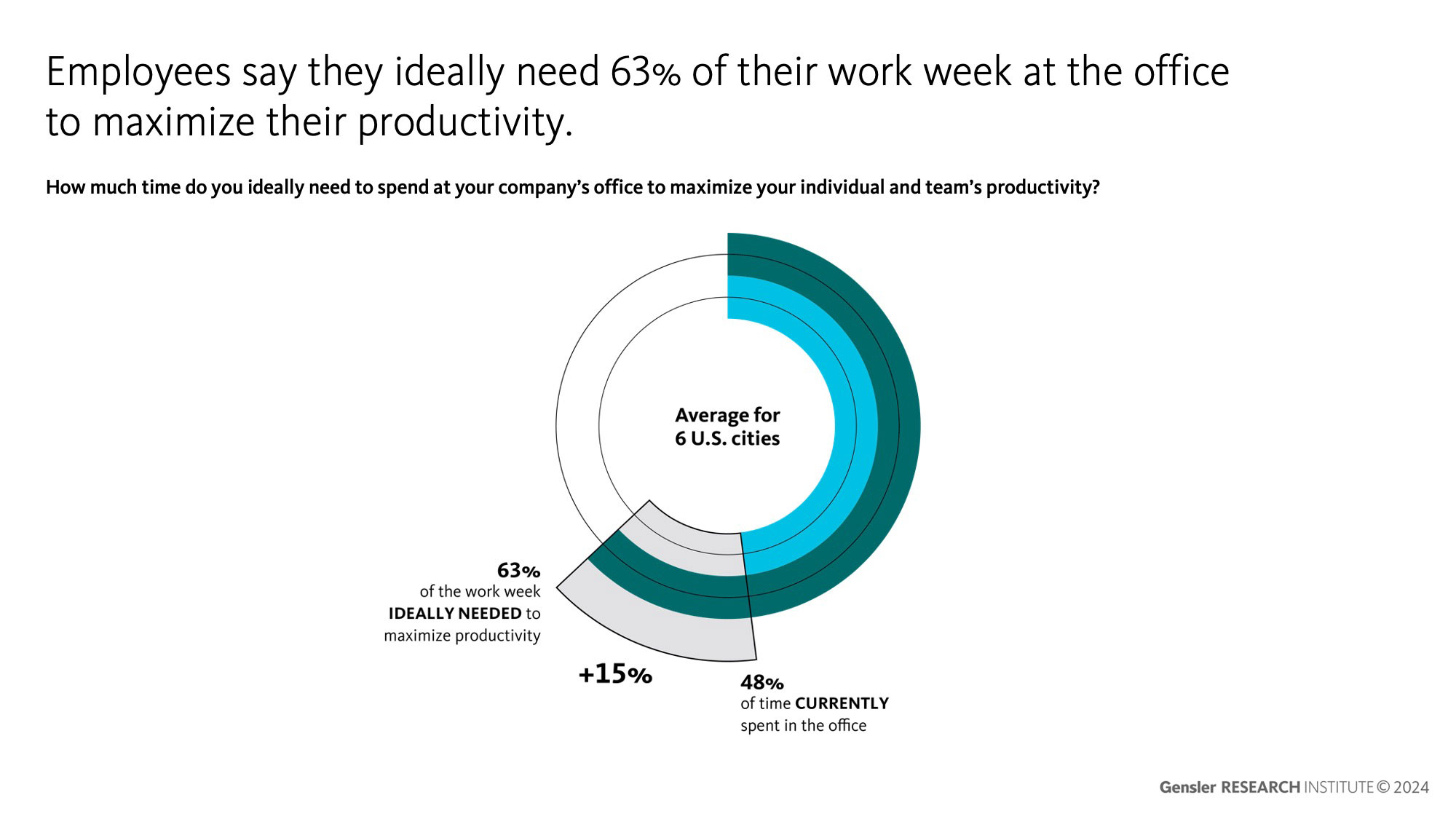
3. Place as Destination
College campuses are more than just academic institutions — they’re vibrant communities where students come together to learn, live, build relationships, and collaborate. The opportunity to connect with other people is the key reason students come to campus. Regardless of their preferred modality (on-campus, hybrid, or virtual), attending class, socializing, and working with instructors are the most important reasons to come to campus. However, the campus is also a place to do focus work or quiet, individual study as well. We see a similar pattern with office workers, particularly Gen Z employees. “To focus on my work” is cited as the most important reason to come to the office, followed by socializing with colleagues, being part of a community, and professional development.
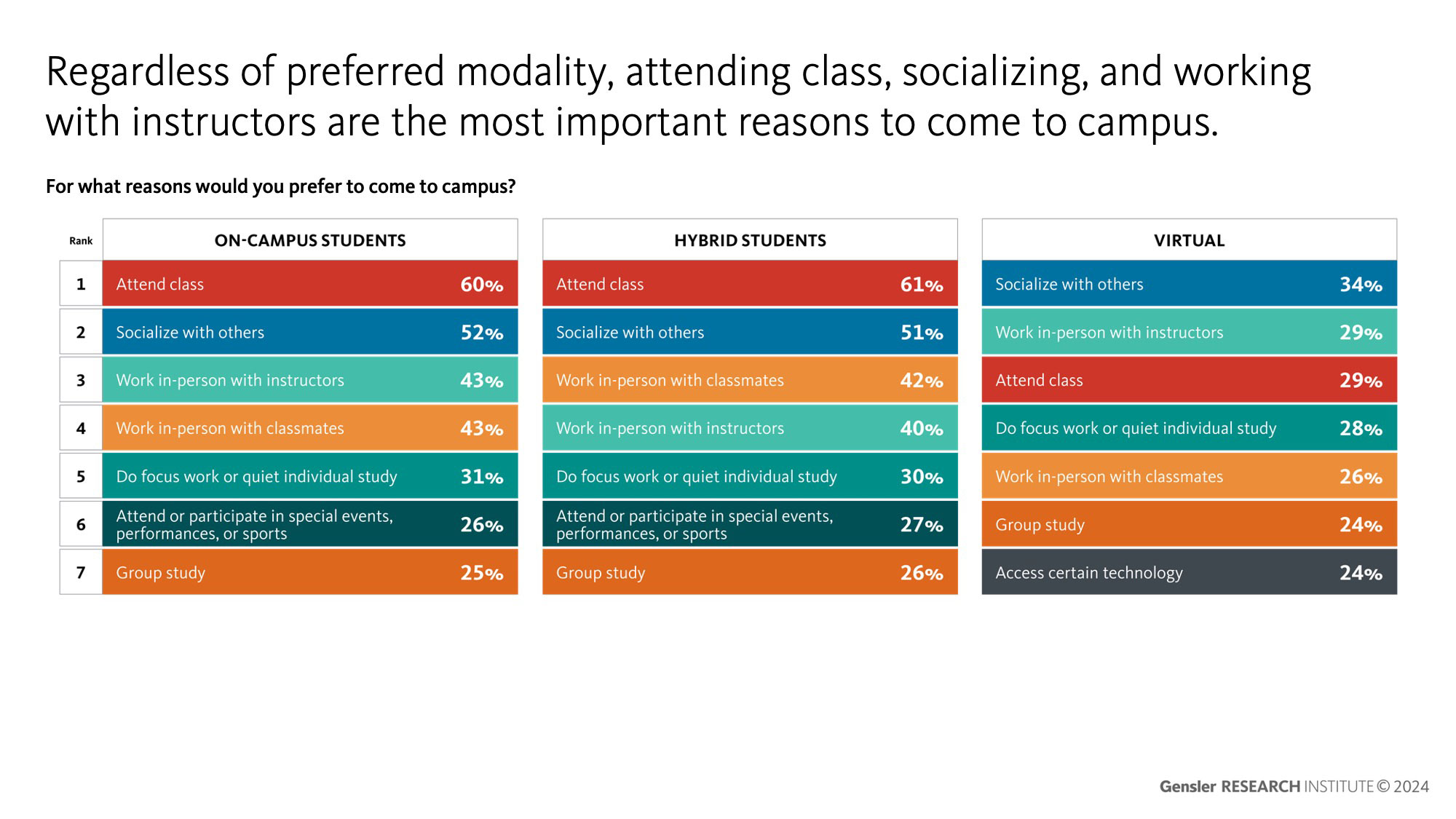
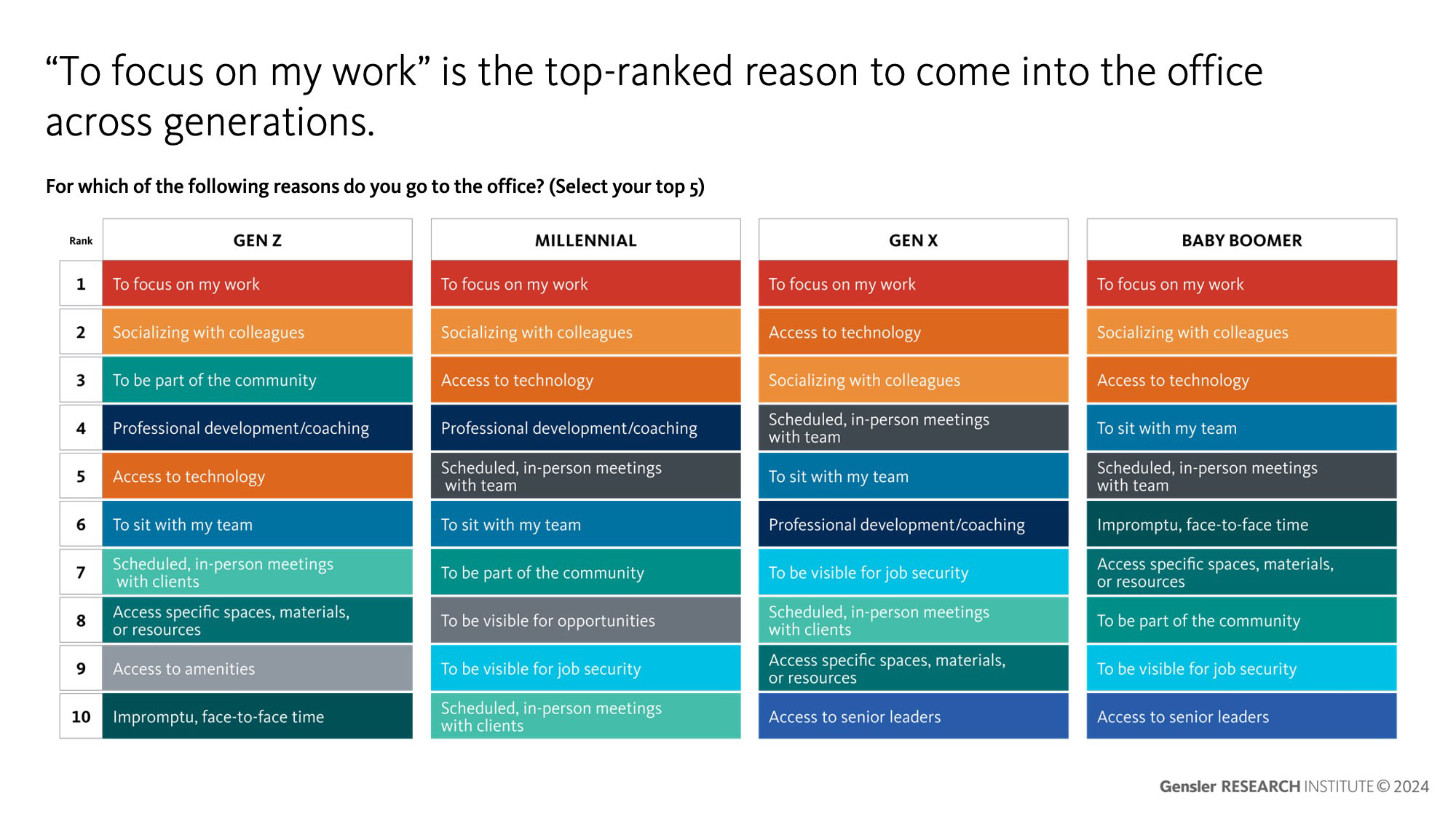
The idea of creating “place as a destination” with a mix of experiences matters to both students and employees. Creating campus environments for various modes of learning and relationship building is critical for student engagement and learning. It is also critical for employees. A majority (73%) of employees say they have choice in where to work within the office environment, but they may not have the spaces that make the most impact for critical work activities that attract and retain talent. From on-site amenities like work cafes, libraries, and gardens to flexible work areas that blur the lines between work and leisure, the modern office is designed to be a destination in itself — a place where employees want to be, not just have to be.
4. Office as Campus
We learn and work in many ways, which requires more than one type of place to support it. In addition to their residence hall or home, students prefer attending class virtually or collaborating with classmates virtually from a wide range of settings, including outdoor spaces, library, student centers, campus cafés, and even off-campus locations. Work follows very similar patterns — office workers have worked both in and out of the office, as we’ve seen since we first started measuring where work was happening in 2016. Currently, employees are spending less than half of a typical workweek working at their company’s workplace, and less than a quarter of the week working from home. The balance is spent in a variety of other locations outside of the office, ranging from business travel to client/customer sites to coworking to third places.
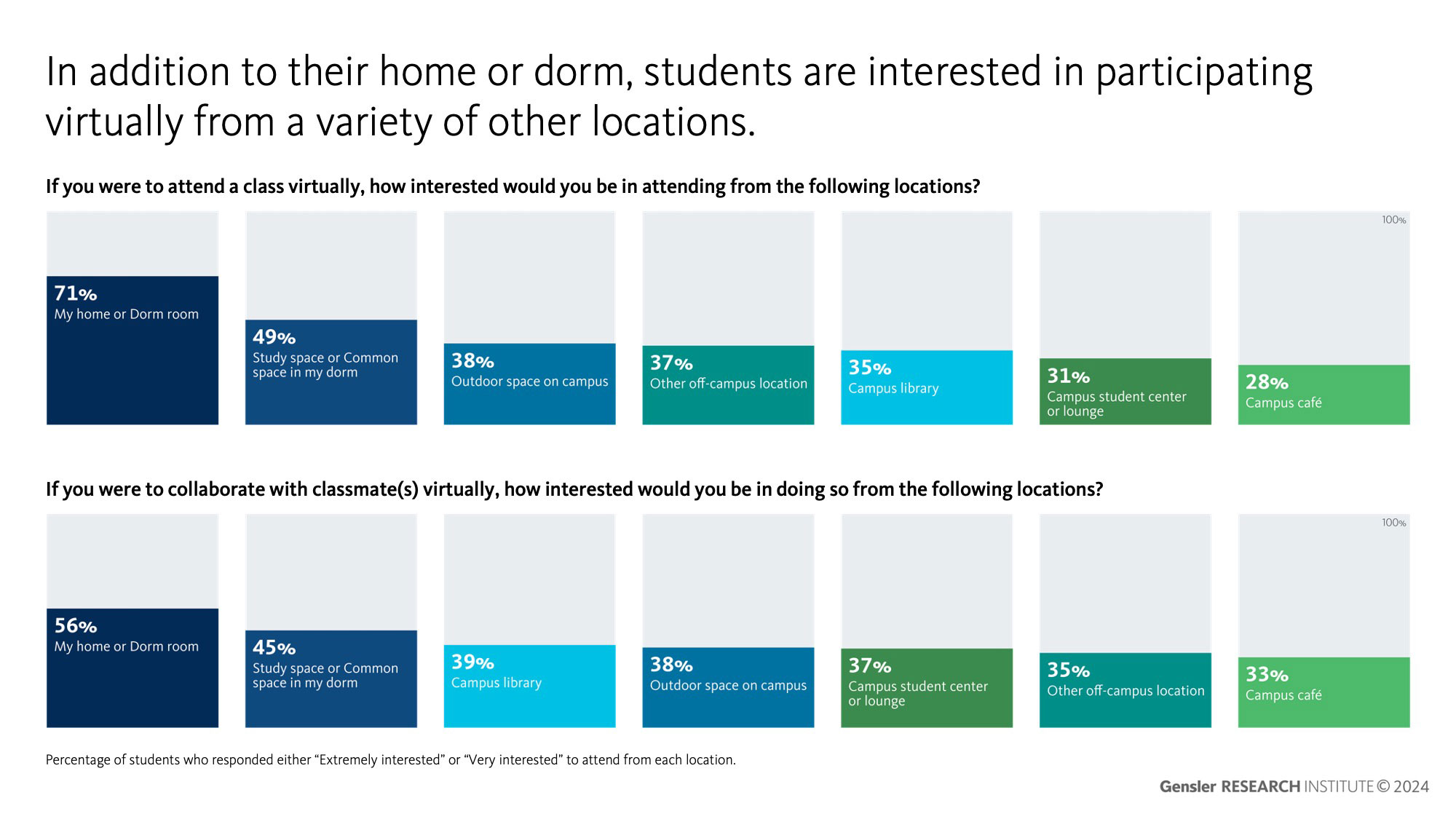
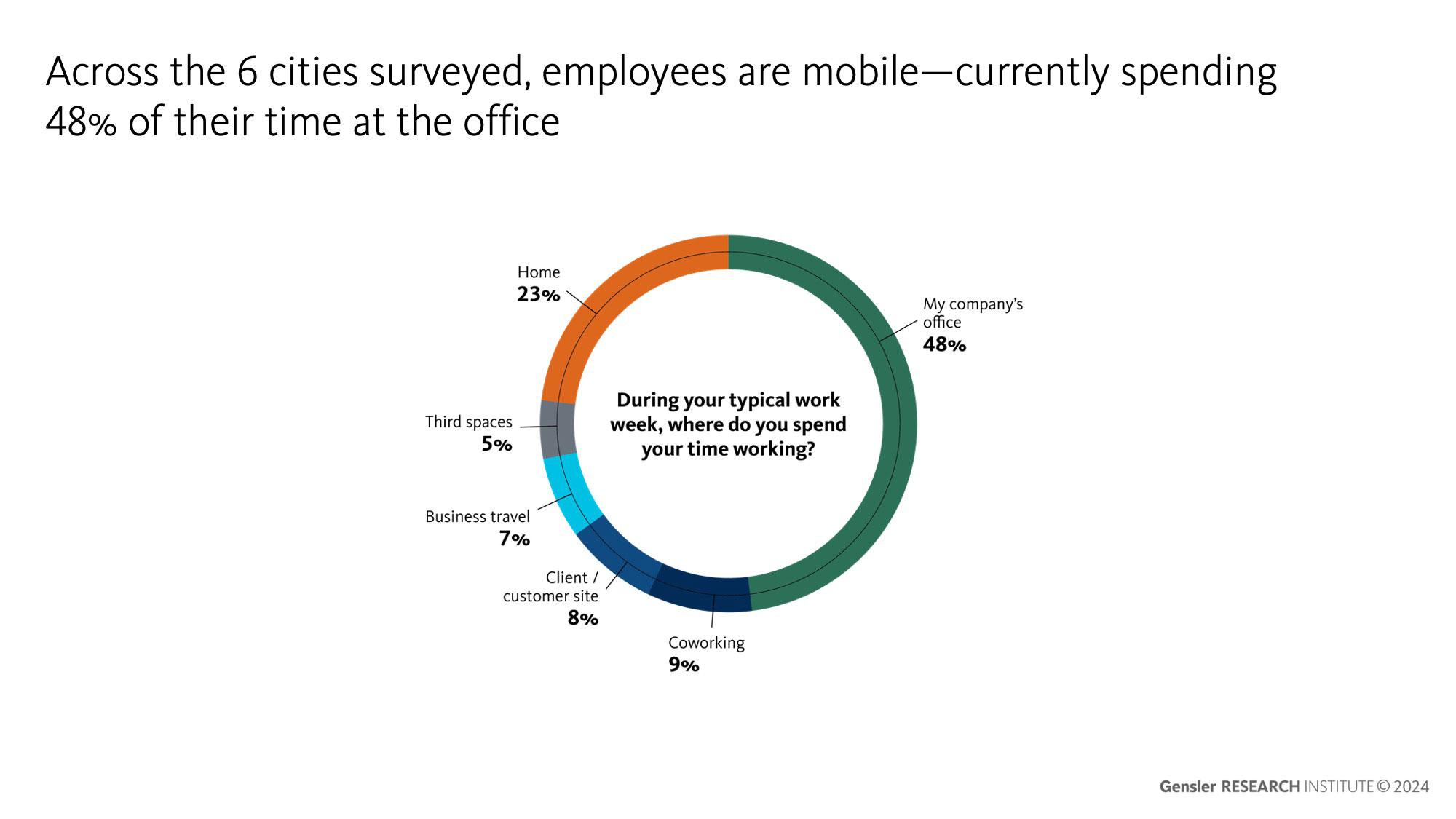
The office is increasingly being envisioned as a campus-like environment that fosters community and connection. Just as universities and colleges provide a range of spaces and resources to support student life, workplaces are incorporating similar elements to enhance the employee experience. This includes amenities such as wellness rooms, learning centers, and innovation hubs, as well as outdoor spaces that promote creativity and relaxation. It also includes leveraging the neighborhood as an extension of the workplace to provide retail, shopping, restaurants, and an array of other experiences as a benefit to employees. By learning from colleges and universities, organizations can create environments that inspire innovation, enhance collaboration, and instill a sense of community.
The way students learn is undoubtedly influencing the design of the modern workplace. From embracing multimodal learning approaches to accommodating hybrid work models and prioritizing placemaking, organizations are reimagining the office as a dynamic and engaging environment that supports the needs and preferences of today’s workforce. By taking cues from higher education and integrating these insights into workplace design, we can create spaces that not only attract top talent but empower tomorrow’s workforce to thrive and succeed. At the same time, when students have access to an elevated atmosphere that emulates their future, they can aspire to even greater heights and new ways of thinking as part of the learning trajectory.
For media inquiries, email .
